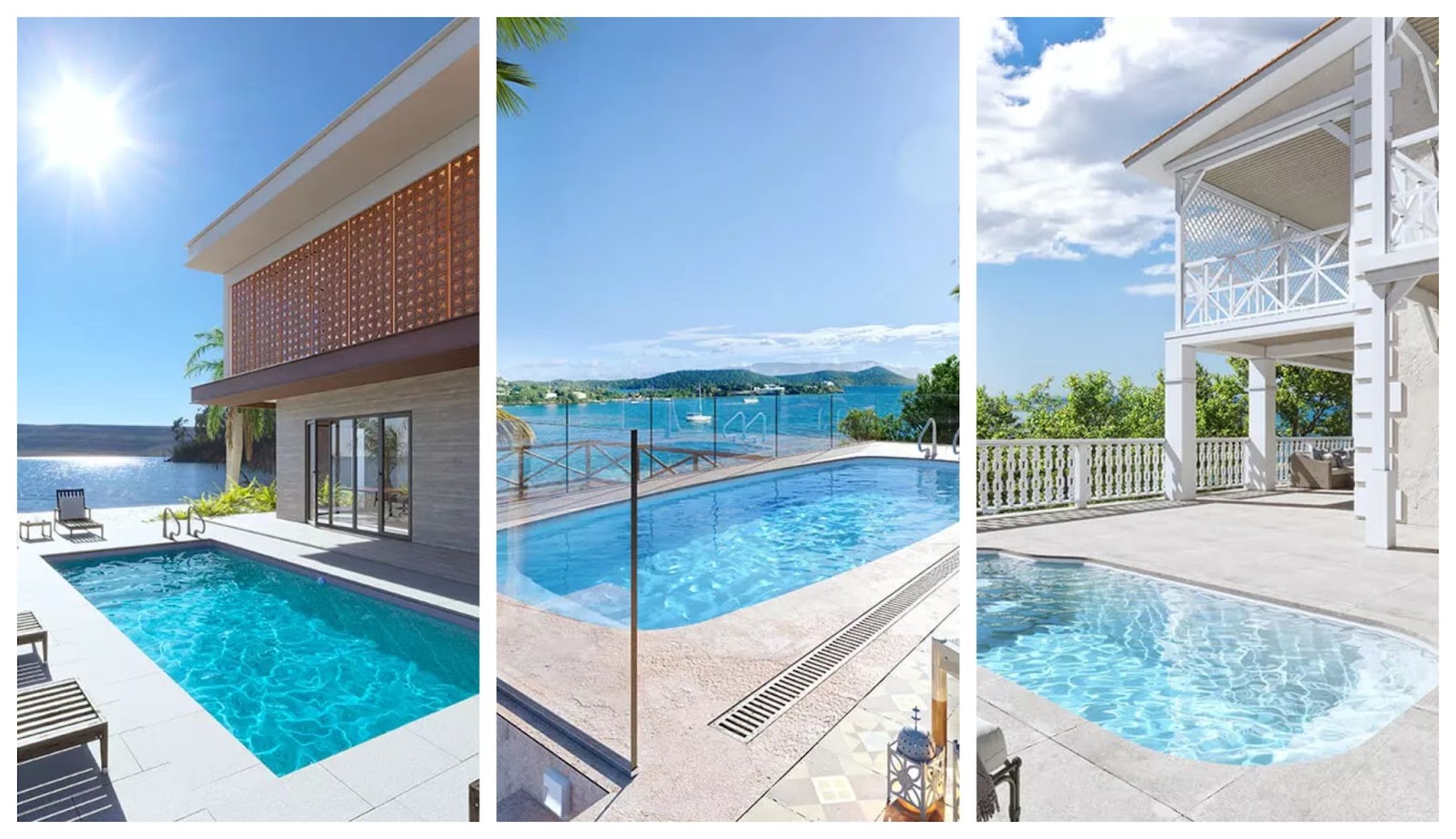Frequently Asked Questions About Fiberglass Pool Installation
Fiberglass pools are growing increasingly popular…but in comparison to vinyl liners and concrete pools, they are still relatively a recent addition to the pool industry.
What exactly do you know about them?
Don’t worry if the answer is “not much.” We’ve got you covered in our judgment-free zone.
We’ve compiled a list of FAQs about fiberglass pools and concise responses to each. There are other links if you want to learn more.
Let’s get started!
How Does A Fiberglass Pool Become Put Together?
The procedure for building your pool is as follows:
- Make a hole in the ground.
- Set up the pool and make sure it’s level.
- Install the piping and filter system for the pool.
- Backfill the pool shell with water.
- Install the patio and coping.
- Place the pool barrier in place.
The sophisticated installation processes combine cutting-edge best practices to prevent long-term difficulties, including leaks, separation, settling, and bulges.
How Long Does It Take when It Comes To Installing A Fiberglass Pool?
Fiberglass pool dealers may install the pool in as little as 3–6 weeks. The pool, the patio, and the landscaping are all included.
By the end of day two, you’ll be able to swim in your pool!
Is It Possible To Alter The Geometry Of A Fiberglass Pool?
Fiberglass pools manufacturers form a factory mold. Therefore there are fewer possibilities for size and form customization. You can only use preset forms.
But don’t let anyone tell you this isn’t a bespoke pool.
Everything else is completely customizable:
- The Gelcoat is a particular shade of blue (much more vibrant than your standard concrete pool color finishes)
- If you desire it, you can have tile (on the waterline or inlays and mosaics in the steps and seats)
- Materials for the patio (stamped concrete, brick pavers, coping stones, flagstones, etc.)
- If you desire water features, you can have them (cascades, deck jets, natural waterfalls, and more)
Is It True That Fiberglass Pools Float?
A fiberglass pool that has been properly constructed and maintained will never float or pop up.
It may be avoided in two ways.
First and foremost, your pool should be equipped with a sump pump.
We install a sump line at Pentarm Pools so you can monitor and remove groundwater. We also use a River Rod and an extra-thick concrete bond beam to secure the pool and terrace.
Second, make sure your pool is always full of water. The weight of the water keeps the pool from both floating and popping up.
Do Fiberglass Pools Deteriorate With Time?
To some extent, all pools will brighten.
Will the surface of the gel coat fade with time? Yes, but in a steady and even manner.
The gel coat surface of a fiberglass pool is the most durable pool coating available, both in terms of aesthetics and life expectancy, if properly constructed and maintained.
You could detect a change if you compare a new color sample to a 10-year-old pool, but you won’t be able to tell otherwise.
Improper water chemistry nearly usually causes premature or uneven fading of the gel coat surface.
Is It Easier To Maintain Fiberglass Pools Than Vinyl Liners Or Concrete Pools?
Fiberglass pools need the least amount of upkeep of the three types of pools.
- Weekly water chemistry maintenance
- One daily circulation is required for the filter.
- Algae isn’t a concern since the gel coat is smooth and algae-resistant, unlike concrete pool plaster, with holes and voids. The algae can’t survive since there’s nowhere for them to reside.
A fiberglass pool’s gel coat should never need to be resurfaced if it is properly made and maintained.






